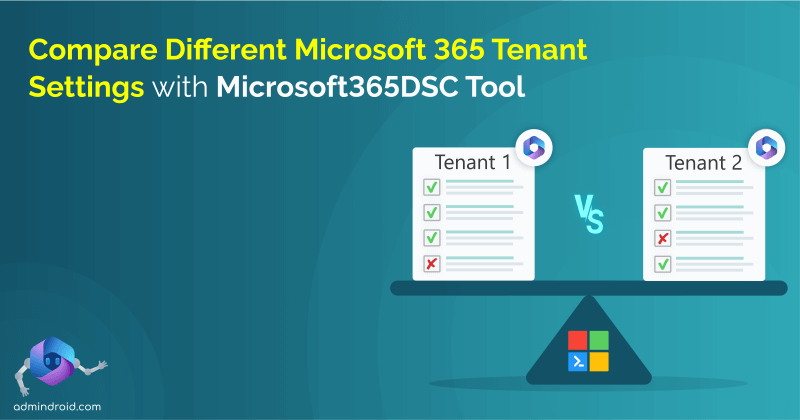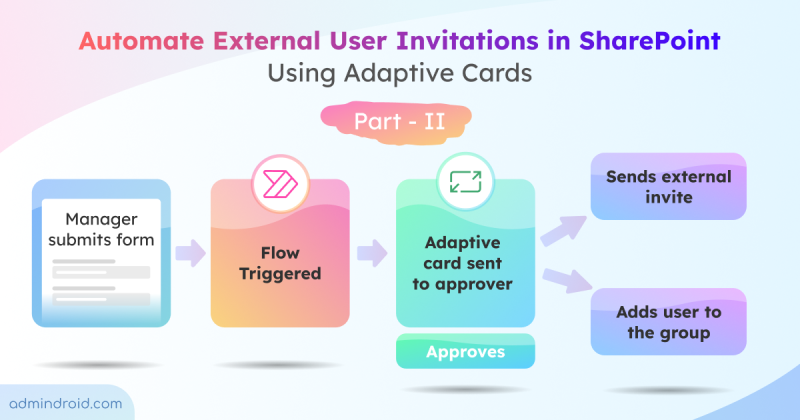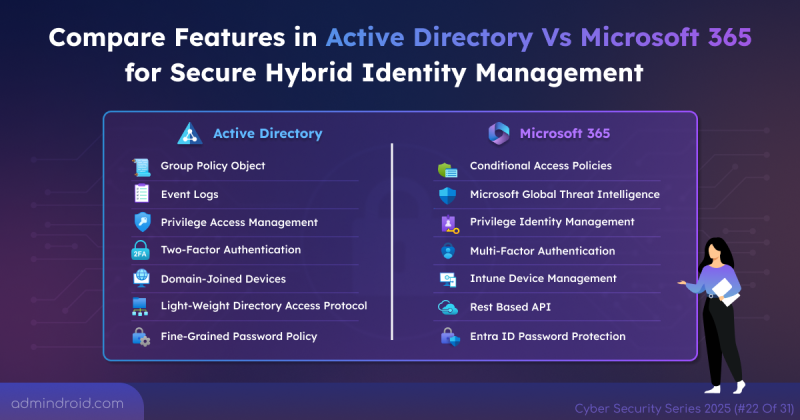Microsoft Teams has become the digital heartbeat of modern workplaces, connecting people, projects, and processes in one unified platform. But with great collaboration comes the need for smart control; governance ensures Teams doesn’t spiral into chaos. From managing data security to streamlining user access, governance is the backbone of a productive Teams environment. With strong Microsoft Teams governance best practices, organization can stay secure, compliant, or efficient. In this blog, we’ll walk you through the essential steps to get there. Let’s get started!
Why Governance Matters in Microsoft Teams?
Imagine hundreds of Teams popping up overnight some active, others forgotten and left unmanaged with no clear owner or purpose. That’s exactly what happens when there’s no governance. Without a smart framework, Teams can spiral into chaos, creating sprawl and confusion.
Governance isn’t about limiting creativity, it’s about steering collaboration in a way that supports security, compliance, and scalability. By defining who can spin up teams, how data is shared, and when to retire inactive spaces, you’re not just building rules, you’re building a long-term strategy for your digital workplace.
And the payoff? A well-governed Teams setup reduces risk, improves user experience, and ensures your technology becomes a business enabler, not a liability.
Microsoft Teams Governance Framework and Strategy Essentials
Without a structured approach, organizations quickly run into duplicated workspaces, confusing information trails, and a poor user experience. A strong governance framework brings together the right policies, role definitions, security controls, and lifecycle rules so that Teams stays in control without slowing down productivity.
To make these governance principles easier to follow, here are the three core mantras that shape a healthy and well-managed Teams environment. Let’s dive in!
| a) Develop strategies for better Teams governance |
| b) Improve Teams secure score points |
| c) Monitor Teams usage report analytics |
Download Cheat Sheet: Strategies to Strengthen Microsoft Teams Governance.pdf
a) Develop Strategies for Microsoft Teams Governance
To build a resilient and well-managed Microsoft Teams environment, organizations must go beyond basic controls and adopt a strategic governance framework. Explore the three key areas of Microsoft Teams governance with focused strategies designed to strengthen your environment.
- Strategies for simplified management
- Strategies for security and compliance
- Strategies for productivity
1. Effective Governance for Simplified Team Management
Simplifying Microsoft Teams management starts with clear structure, automated lifecycle controls, and consistent naming practices. The below governance measures help reduce clutter, maintain ownership clarity, and keep teams aligned with organizational rules. With the right policies in place, admins can manage growth effortlessly while ensuring a well-organized Teams environment. Let’s take a closer look on each of them.
- Apply consistent naming policy
- Use approval workflows
- Apply group expiration
- Use auto-archiving
- Manage Teams ownership roles
 Apply a Consistent Microsoft Teams Naming Policy for Better Organization
Apply a Consistent Microsoft Teams Naming Policy for Better Organization
A consistent naming policy enforces standardized formats for Teams, simplifying identification by attribute like title, department, or region. This is especially critical in large enterprises where hundreds of teams are created, helping prevent duplication and confusion. Governance-wise, it supports auditability, enhances discoverability, and aligns with compliance protocols.
More info: https://learn.microsoft.com/en-us/microsoft-365/solutions/groups-naming-policy?view=o365-worldwide
 Use Approvals to Streamline Microsoft Teams Governance
Use Approvals to Streamline Microsoft Teams Governance
Automation-driven approvals in Microsoft Teams help organizations enforce governance while reducing manual effort. Create workflows in Microsoft Teams to handle tasks such as scheduling meetings directly from a message, sending automated reminders, managing content approvals, or welcoming new members with guidelines. These workflows reduce unauthorized access, enforce ownership standards, and integrate automation for scalable oversight.
More info: https://blog.admindroid.com/how-to-create-workflows-in-microsoft-teams/
 Apply Microsoft 365 Group Expiration Policies
Apply Microsoft 365 Group Expiration Policies
Lifecycle policy like expiration policies enforce timely review by prompting group owners to renew or allow groups to expire. If no action is taken, the group is automatically deleted once the expiration date passes. This ensures that only active, relevant Teams persist, preventing the accumulation of unused resources, reducing storage costs, and mitigating risks associated with forgotten sensitive data.
More info: https://m365scripts.com/microsoft365/how-to-set-up-microsoft-365-group-expiration-policy/
 Auto-archive Inactive Workspaces in Microsoft Teams
Auto-archive Inactive Workspaces in Microsoft Teams
Auto-archiving policies, as part of a broader lifecycle policy, allow organizations to automatically transition inactive Teams into a read-only state. This governance approach preserves historical content for compliance while preventing further changes, reducing storage use and minimizing clutter. By embedding auto-archiving into the team lifecycle, organizations ensure that only active, relevant workspaces remain editable. It’s a proactive strategy to manage collaboration sprawl and enforce workspace hygiene at scale.
More info: https://o365reports.com/2025/03/18/how-to-archive-inactive-teams-in-microsoft-teams/
 Manage Microsoft Teams Ownership Roles Effectively
Manage Microsoft Teams Ownership Roles Effectively
Effective ownership management ensures that every team has responsible individuals overseeing its configuration, membership, and content sharing. Governance requires clear assignment of owners, regular audits, and automation where possible to prevent “ownerless” teams. This safeguards data, enforces accountability, and aligns team operations with organizational policies. Assigning multiple active owners to a team ensures it remains managed even if one owner exits. This approach maintains consistent oversight and supports governance continuity.
2. Governance Strategy for Security and Compliance in Microsoft Teams
Below are the governance practices that strengthen security and ensure regulatory compliance within Microsoft Teams. We’ll now explore how to manage permissions, control external access, apply data protection measures, and enforce retention policies in the below section.
- Restrict Teams members’ permission
- Configure sensitivity labels
- Manage third-party app usage
- Control guest permissions
- Create custom external access policy
- Set up data retention policies
 Restrict Microsoft Teams Members’ Permissions to Reduce Sprawl
Restrict Microsoft Teams Members’ Permissions to Reduce Sprawl
Limiting member permissions helps prevent uncontrolled content creation, channel accumulation, and unauthorized changes. By configuring Teams settings like channel creation permissions, organizations define what members can and cannot do. This includes disabling private channel creation, restricting app installations, and controlling guest access. Such governance ensures a secure, purposeful collaboration environment aligned with organizational standards and data protection goals.
More info: https://blog.admindroid.com/managing-private-channels-in-microsoft-teams/
 Configure Sensitivity Labels in Microsoft Teams for Secure Collaboration
Configure Sensitivity Labels in Microsoft Teams for Secure Collaboration
Sensitivity labels in Microsoft 365 classify and protect data based on its confidentiality level, applying encryption and access controls automatically. They enforce consistent file‑sharing policies, preventing accidental exposure with restrictions like “Do Not Share Externally” or “View Only.” In meetings, labels can limit chat access, control screen sharing, or block external participants, ensuring sensitive discussions remain secure. Together, they streamline governance by reducing admin effort while safeguarding collaboration across large, diverse teams.
More info: https://blog.admindroid.com/microsoft-365-sensitivity-labels-in-the-sharing-dialog/
 Manage Third-Party App Usage in Microsoft Teams Securely
Manage Third-Party App Usage in Microsoft Teams Securely
Controlling third-party app access is essential, especially in environments where users may install apps independently. App permission policies allow administrators to define which apps are allowed, blocked, or pre-installed based on roles or departments. This helps prevent shadow IT, reduce data exposure risks, and maintain compliance with internal policies.
More info: https://blog.admindroid.com/office-365-pros-guide-to-managing-team-app-permission-policies/
 Control Guest Permissions in Microsoft Teams to Prevent Unauthorized Access
Control Guest Permissions in Microsoft Teams to Prevent Unauthorized Access
Managing guest access is a key governance strategy for protecting internal resources from external threats. By configuring Teams guest access settings and Entra B2B collaboration policies, organizations define what guests can view, share, or modify. This reduces the risk of data breaches and ensures shared content remains under administrative control. Such governance balances external collaboration with internal security and compliance requirements.
More info: https://m365scripts.com/microsoft365/block-guest-access-to-specific-microsoft-365-groups/
 Create Custom External Access Policies in Microsoft Teams
Create Custom External Access Policies in Microsoft Teams
External access policies determine how users from other organizations can communicate with internal Teams users. By customizing these policies, organizations can block or allow specific domains, ensuring secure cross-tenant collaboration. This layer protects against external threats while enabling trusted partnerships.
 Set Up Microsoft Teams Data Retention Policies for Compliance
Set Up Microsoft Teams Data Retention Policies for Compliance
In Microsoft Teams, conversations, files, and meeting content can accumulate rapidly especially in large organizations. Without a lifecycle policy like data retention policy, this information can either linger indefinitely, increasing compliance and security risks, or be deleted prematurely, disrupting workflows and access to critical knowledge. Configure retention policy in Microsoft Teams to ensure that data is preserved only as long as necessary, aligning with legal, regulatory, and operational requirements.
More info: https://blog.admindroid.com/how-to-configure-retention-policies-in-microsoft-365/
Also, consider applying Microsoft Teams security best practices through careful configuration to empowers users and enhances overall security.
3. Microsoft Teams Governance Strategies for Productivity
Microsoft Teams governance for productivity focuses on creating a consistent, streamlined collaboration experience across the organization. By standardizing templates, tags, app access, admins can reduce setup errors and align Teams usage with business workflows. Let’s see in clear!
 Use Microsoft Teams Templates for Structured Collaboration
Use Microsoft Teams Templates for Structured Collaboration
Templates in Microsoft Teams serve as a governance tool to enforce consistency in how teams are created and organized. By predefining channels, tabs, and apps, admins can ensure that every new team follows a standardized structure aligned with business processes.
Additionally, template policies can be applied to control which templates are available to users and meet both your governance objectives as well as your users’ collaboration need in the environment. This reduces setup errors, accelerates onboarding, and promotes uniform collaboration practices across departments.
More info: https://learn.microsoft.com/en-us/microsoftteams/templates-policies
 Use Microsoft Teams Tags to Improve Team Communication
Use Microsoft Teams Tags to Improve Team Communication
While tags are primarily a user-level feature, they can support governance by enabling targeted communication within large teams. By organizing members into functional groups (e.g., @Marketing), tags help reduce noise and ensure messages reach the right audience. This improves operational clarity and supports structured communication workflows.
More info: https://m365scripts.com/microsoft-teams/a-complete-guide-to-manage-tags-in-microsoft-teams/
 Configure Microsoft Teams App Setup Policies for Better User Experience
Configure Microsoft Teams App Setup Policies for Better User Experience
App setup policies enable admins to define which apps appear by default in the Teams interface, ensuring users have quick access to approved tools. By customizing pinned apps for different roles or departments, organizations can streamline onboarding, reduce clutter, and maintain a consistent user experience that aligns with governance standards.
More info: https://learn.microsoft.com/en-us/microsoftteams/teams-app-setup-policies
b) Microsoft Teams Secure Score Improvement Best Practices
As part of governance, organizations should enforce critical Teams meeting configurations to maintain secure collaboration practices. Settings such as disabling anonymous joins, limiting screen sharing to specific roles, and restricting recording permissions help prevent unauthorized access and data exposure. These controls align with organizational policies and compliance standards, while also contributing up to 8 points toward Microsoft Secure Score. Governance-led configuration ensures meetings are purposeful, secure, and policy-compliant.
1. Configure which Users are Allowed to Present in Teams Meetings
This setting controls who can share content, mute participants, and perform other presenter actions during a meeting. By configuring this setting, you can prevent disruptions by ensuring only authorized presenters can share content or control meeting functions.
2. Restrict Anonymous Users from Joining Meetings
This action prevents users who are not signed in with a recognized identity like a Microsoft 365 or Skype for Business account from entering a meeting. Thus, helps in blocking unverified participants, reducing the risk of unauthorized access and safeguarding sensitive discussions.
3. Only Invited Users Should be Automatically Admitted to Teams Meetings
This configuration ensures that only users who were explicitly invited to the meeting can bypass the lobby and automatically join the meeting. By doing so, the policy enforces tighter access control by allowing only explicitly invited attendees to bypass the lobby.
4. Restrict Dial-In Users from Bypassing a Meeting Lobby
This setting requires users joining by phone to wait in the meeting lobby until an organizer or presenter admits them. It adds an extra security layer by requiring phone participants to be admitted manually by organizers.
5. Limit External Participants from Having Control in Teams Meetings
This action restricts guests and users from outside your organization from having control over the presentation or shared desktop, limiting potential malicious activity. Configuring this protects against malicious activity by preventing guests from taking control of shared desktops or presentations.
6. Restrict Anonymous Users from Starting Teams Meetings
This configuration prevents unsigned-in users from initiating a meeting. Thereby, stopping unsigned‑in users from initiating meetings, ensuring only trusted identities can host sessions.
c) Regularly Monitor Microsoft Teams Reports Analytics for Governance
Microsoft 365 offers built-in Teams reports that cover user activity, device usage, app engagement, meeting statistics, and more. These reports help admins monitor platform adoption, identify inactive users, and assess security posture across Teams. They serve as a foundational governance tool for managing collaboration and enforcing organizational policies.
1. Teams usage activity report
Monitor active channels, guest activity, or collaboration statistics and identify unused teams for timely archival or deletion, which effectively controls governance sprawl.
2. Teams user activity report
Provides insights that streamline user activities, restrict unwanted permissions, and enhance overall Teams management by measuring adoption and highlighting users who may need additional training.
3. Teams app usage report
Use to identify and manage app sprawl, ensuring only approved applications are in use and aligning app usage with security policies.
4. Teams device usage report
Track desktop and mobile client distribution to validate endpoint policies, while identifying the rapid rise of unauthorized devices accessing Teams to strengthen security controls.
5. Call quality report
Monitor and analyse call performance, identify issues, and proactively improve overall communication quality with insights on audio/video streams, network conditions, devices, and user feedback.
More info: https://blog.admindroid.com/built-in-teams-usage-activity-reports-in-microsoft-365-admin-center/
Moreover, AdminDroid reporting tool enhances this visibility by delivering deeper, customizable reporting across Microsoft Teams. It simplifies Teams management with granular insights, automated alerts, and role-based dashboards which is ideal for organizations seeking advanced analytics and scalable governance.
Effective Microsoft Teams governance is more than just setting policies, it’s about creating a secure, streamlined, and productive collaboration environment tailored to your organization’s needs. Each best practices plays a vital role in maintaining control, compliance, and clarity across Teams. I hope this blog helps you build a more governed and resilient Teams environment.






